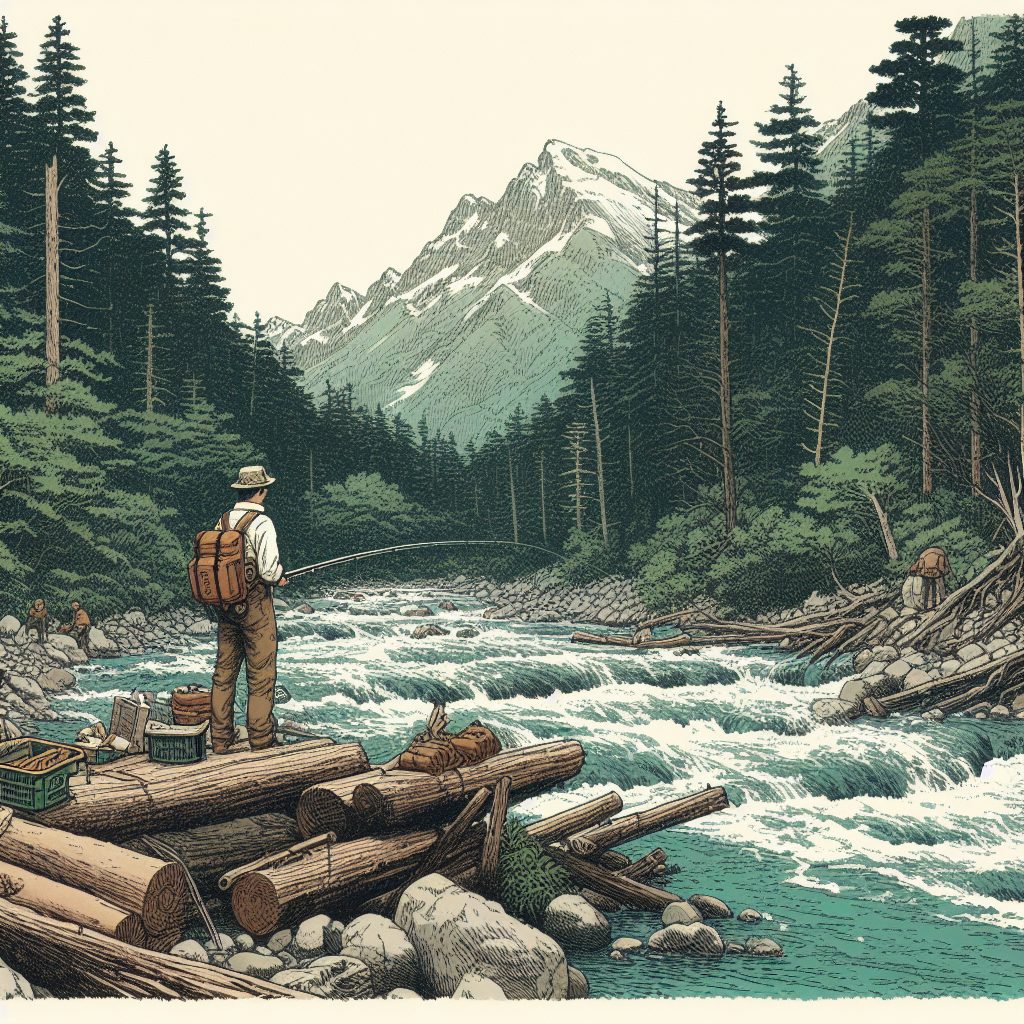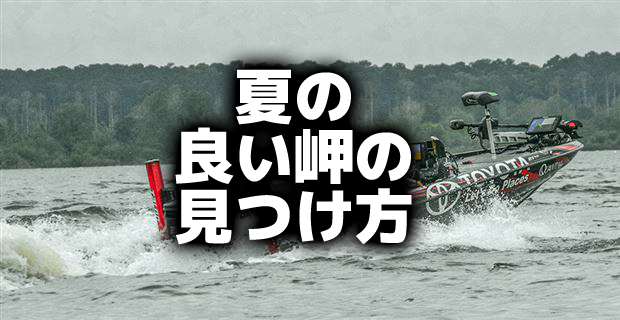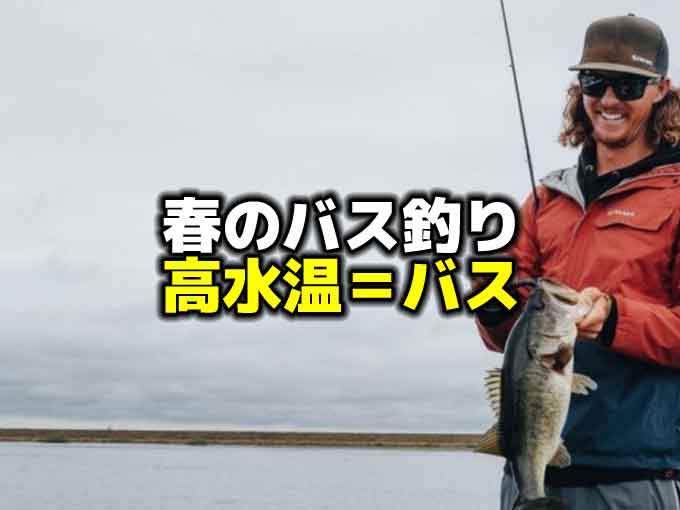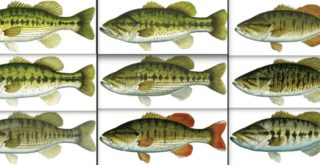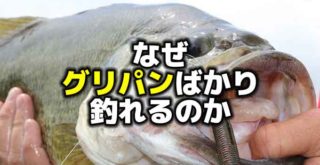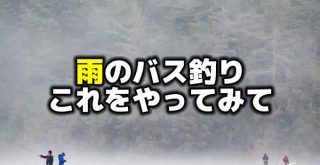冬の川でバスをゲット!初心者アングラーでも成功するバス釣りテクニック!
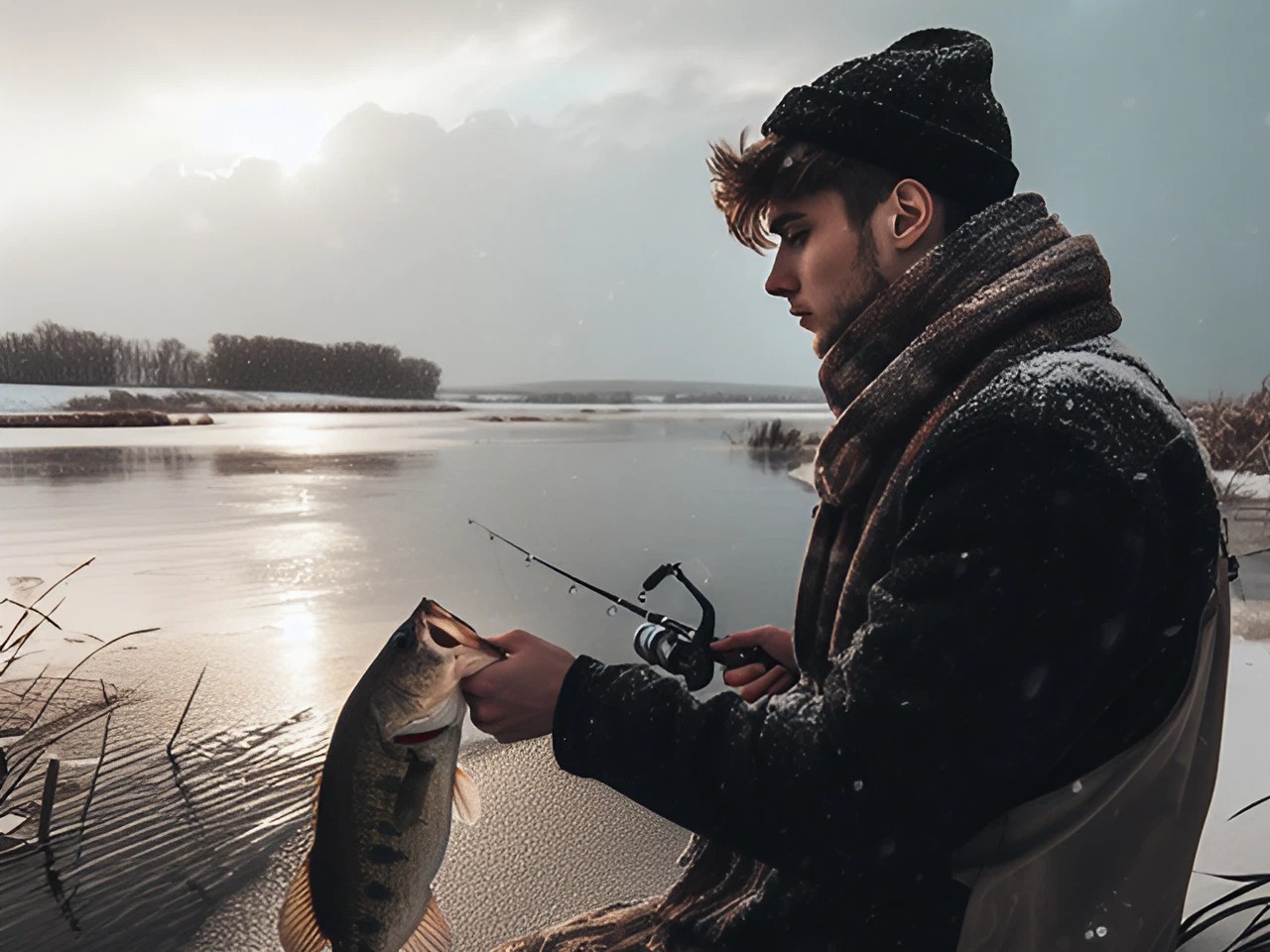
冬の川でバスを釣りたいけど釣果が出ずにいる初心者の方に。プロアングラーが冬でも効果抜群の川のポイント押さえと初心者さんでも使いこなせる簡単テクニックを紹介します。バスの行動を理解し、狙うべきスポット、使うべきルアーを解説。これを読んで最高の冬のバス釣りを実現しましょう!
こんにちは!店長の小山です!
冬というのは、毎年やってきます。
住んでいる地域によっても差がありますが、イメージ的には12月ぐらいから冬!という感じがしますよね。
私が住んでいる近くの野尻湖や木崎湖ではもう9月ごろから冬みたいな日もあるのですが、バスたちも遅かれ早かれ、それに合わせて冬への準備を始めているんです。
人間が冬をイメージする時、たとえば衣替えがあったり、押し入れから毛布やこたつを出してきたりしますよね。これが、人間の変化です。
では、バスアングラーはどう変化すればいいのでしょうか。
ご存知のように、夏の間にずっと釣れ続けていたルアーが冬まで釣れ続けるということは滅多にありません。
夏に釣れ続けていたポイントが冬も釣れ続けるということもめったにありません。
私たちバスアングラーは、冬に備えて冬のルアーを準備し、冬の釣れるポイントを学ぶ必要があります。
「いやいや、学ぶなら実際に釣りに行った方が早いよ!」という意見はごもっともで私も賛成ですが、冬はバスの代謝が落ち、なかなかエサを食べません。
そんな状況でゼロから学ぶにはあまりにも大変です。
この記事は、アメリカのカヤックバス釣り雑誌「カヤックバスフィッシングマガジン」の共同創設者でありアウトドアライターのクリス・ペイン氏のウェブストアのブログ記事で、冬の川のバス釣りについて書かれています。(著者はアウトドアライターでありカヤックアングラーのジョン・ヘンリー・ボートライト氏)
寒さとノーバイトにやられて心が折れる前に、ぜひこの記事で予習していってください。
天候に注目すること
Pay attention to the weather
During the summer, temperatures can be pretty consistent for weeks, if not months at a time and weather is less of a factor than it is during the winter. During the winter you should be focusing on weather trends and weather changes, especially sharp changes in temperature or sunlight. I wake up daily, grab my coffee and immediately after, check the weather for the coming days. I also check river flows and weather upstream as these can have profound effects on waters downstream. But how do I know what weather the bass like? Well, for starters I like to think of the weather I like during the winter…
First, if you’ve had a trend of a few days of cold temperatures, rain and cloud cover- you’re going to be cold and try to find the warmest place to stay. For bass, this usually means getting into a deep hole where warm water settles. If you’re lucky enough to have natural springs along your rivers, this is a great place to find bass hanging around the warm water escaping from Earth’s thermally insulating crust. I’d especially recommend deep holes out of the current or holes downstream of structure, where cooler water has a heard time penetrating. Multiple bass can occupy these warm pockets, and if you grab one bass out of that hole you can almost be certain his friends are down there also, just waiting for an opportune meal. Don’t hesitate to cast back to that same spot.
Next, I look for sharp changes in weather- on both ends of the thermometer. Days where the temperature drops substantially or rises substantially are indicators of activity changes. If after your few days of cold snap, the sun decides to come out in full force and the mercury climbs 20, 30 or 40? in one day, you’d notice how your innate instinct is to get out and enjoy the sunshine. Bass will also have this instinctual urge to get out of their hole and get back into a warmer spot. Intense sunlight and the ambient air temperature rising will inspire black bass to seek shallow waters where the (also more active) insects and amphibians tend to congregate. These waters warm quicker, especially rivers lined with rocks and gravel banks. On these days you’ll notice bass higher in the columns and closer to the banks where the water is warming quickly. Throughout Central Texas our rivers tend to have both a soft, mud bank (inside turn of the river) and rock banks (outside edge of the river). I alway cast the rock bank first unless it’s a steep drop off and the mud bank is a shallow slope (in this instance I would cast the mud bank first). Rocky areas tend to warm quicker than mud or clay and bass now this.
You should also focus on shallow inlets or flat pockets out of the main channel, like where creeks and draws dump in, specially if that creek holds water. More than likely during the summer and early fall this area is choked with slop such as cattails, reeds or lily pads. Focus on these areas on the warmer, brighter days as the lack of flowing water allows the area to warm up quickly. Bass like to warm up in these depths and will try to find cover near the current (but just outside of it) to ambush prey as it flows by in the swifter water. It offers a chance to warm up while waiting for a easy pickins.If, on the other hand, you’ve had great sunlight, warmer water and higher temps for a few days and you see that a storm system is rolling in tomorrow evening- you better grab your poles. As the pressure drops and these bass prepare to return to their winter hideout they have an urge to feed and you should take advantage of this by being on the water trying to feed them. You’ll have some work cut out for you… on the days of substantial change the bass aren’t always sure what they want or how they want it- but you can convince them.
I’ve often started out with one lure in the morning, another during mid-day and a third or fourth before the sun goes down (not to mention the intermediate ones that weren’t catching bass). There have been some of these ‘transition days’ where me and my fellow fishermen are all throwing different lures and they’re all working- the only constant usually being the depth we’re finding active feeders. Color, style, location and presentation all varied, but the depth didn’t. I could pull one off the rocky warming bank while a friend hits a small eddy behind rock in the middle of the river. As the temperature changed, our lures and techniques had to as well. If the temperature is dramatically falling, start shallow and quick along warm banks in the morning and by evening you’ll be fishing slowly in deep pockets, following the bass as they transition through the water column. If the temperature shows a sharp increase, start slow off the bottom in pockets and work your way to shallow water as the bass transition there later in the day.
夏には、あまりに長いことななくとも、数週間くらいは気温がほぼ一定になることがあり、冬ほど天候は急変しません。 冬の間は、天気の傾向や天気の変化、特に気温や日光の急激な変化に注目する必要があります。
私は毎日起きてコーヒーを飲んだら、数日間の天気をチェックします。 上流の天気も川の流れにより下流に影響を与える可能性があるため、それもチェックします。 では、バスが好む天候とはなんでしょうか? まず、冬の好きな天気について考えてみたいと思います。
まず、数日間気温が低く、雨が降り、雲に覆われている場合は、寒くなっているため、バスはできるだけ暖かい場所にいようとします。 バスにとってこれは、温かい水がたまる深場に入るということを意味します。
幸運にも川に温泉があれば、地下から湧き出る温かい水の周りをうろつくバスを見つけられる場所です。 また、流芯から外れた深場や、冷たい水が行きわたるのに時間がかかりそうなストラクチャーの下流のスポットをおすすめします。
複数のバスがこれらの暖かいポケットを占拠している可能性があり、そこから 1 匹のバスを釣った場合、そこには仲間もいて、ほぼそこでエサを食べていると確信できます。 ためらわずに同じ場所にキャストしましょう。
次に、気温差の急激な変化を見ます。
気温が大幅に下がったり、大幅に上昇した日は、活動の変化があるはずです。 寒波が数日間続いた後、太陽が出てきて、気温が10℃、12℃、15℃と上昇したとしたら? 日中は外に出て日光を浴びたいという自分の本能に気づくはずです。 バスも穴から出て暖かい場所に戻りたいという本能的な衝動を持っています。
強烈な日差しと周囲の気温の上昇により、バスは(より活発な)昆虫や両生類が集まるシャローを探すようになります。 シャロー、特に岩や砂利が岸辺に並んでいる川では、より早く温まります。 このような日には、表層や、水が急速に温まる岸近くにバスがいることに気づくでしょう。
テキサス州中央部にある川は、カーブの内側は柔らかい泥のバンク、外側は岩のバンクになっている傾向があります。 泥のバンクの方が急なドロップオフにでもなっていない限り、私は最初に岩のバンク川をキャストします。(泥のバンクの方が深ければ泥のほうへキャストします)。 岩場は泥や粘土よりも早く温まる傾向があるためです。
また、メインチャネルから外れたシャローのインレットやフラットなポケット、川の流れ込み、特にその川の水がたまっているような場所にも注目します。 夏から秋、こんな場所にはおそらくガマ、アシ、スイレンなどがバンクにあるはずです。 水の流れが少ないことで、このエリアはすぐに暖かくなる可能性があるため、暖かく明るい日にこれらのエリアに注目してください。
バスはこのような場所で体を温めることを好み、流れを遮ってくれるものを見つけて、流れの近くで獲物を待ち伏せしようとします。 簡単に食べられるエサを待ちつつ、身体を温められる場所です。
一方で、数日間も日差しがあり、水温も暖かく、気温も高かったのに、明日には暴風雨が来るようなときもまた、ロッドを手にしたほうがよいでしょう。
気圧が下がると、バスは冬の隠れ家に戻る前にエサを食べたいという衝動にかられるので、この習性を利用します。 あなたにもチャンスはあるでしょう。
大きな変化がある日、バスたちが何を望んでいるのか、どのように望んでいるのかは必ずしもわかりませんが、あなたはバスに近づくことができます。
こういった「特別な日」には、私や他のアングラーもみんなが違うルアーを投げていても、どれでも釣れていることが何度かありました。ただし、ルアーの色、種類、アクションが変わっても、釣れる深さだけは同じです。
友人が川の真ん中の岩でできた反転流で釣り、私は岩の多い温まりやすいバンクで釣りました。
気温の変化に伴い、ルアーやテクニックも変化させる必要があります。 気温が劇的に下がっている場合は、朝のうちは暖かい岸沿いのシャローを素早く釣り、夕方までには深場でゆっくりと釣りをするなど、水深を変化させ移動するバスを追いかけます。 水温が急激に上昇している場合は、ポケットのボトムからゆっくりとスタートし、バスがその日の午後にシャロー移動するのに合わせてシャローに向かって釣り進んでいきます。
スローに、さらにスローに
I like fishing almost as much as I like teaching my friends and family to fish and as the first cold front of the season blew in I couldn’t resist the urge to get a line wet. A cold front blew in during the evening and my buddy calls me inquiring about my plans for the following day, knowing for certain what my answer would be before he even called. The plans were set and we hit the river at sunup.
The river steamed like a power plant, the air hung cold with no wind and the cloudless sky began to be illuminated by the sun. As is his summertime modus operandi, my buddy began pounding the banks with his Texas-rigged brush hog, knowing that this would be my first lure of choice as well. The only difference in our lure selection was presentation and weight. While he chose an 1/8 oz. bullet weight and started burning it near the banks I chose a 3/8 oz. bullet weight and casted upstream and let my lure fall to the bottom. A slight twitch every now and then, or a rise in the rod tip with little to no reeling and I began to land a few bass an hour while he was stuck in a skunky rut. So, as I tend to do, solicited or not, I chime in with why I thought I was fishing more effectively than he was. In true educator fashion, I tried to push him to realizing the answer without me giving it away. As I asked him why he was burning a creature along the banks in shallow water and asking what weather trends we’ve noticed lately, he began to realize that the bass weren’t even seeing his lure (because they weren’t near the banks at all) so he had to change it up, and I urged him to try it slow off the bottom. Within minutes he had his first fish of the day.
So I decided to try an experiment- to figure out just how slow was too slow, just to show him that when bass get snapped into cold weather they want it slower than you think sometimes. So after I had pulled a bass or two out of one pocket I decided to cast into it again but this time I wasn’t going to touch to the rod. I allowed my brush hog to settle on the bottom, placed my rod in the holder and I kept stationary over that hole by slowly paddling against the current. Without touching the rod we both watch my line’s slack get taken up and disappear into the current. After a short struggle, an adult Smallie surfaced to have his photo op with me. At this point he realized, you gotta take it slow.
During cold water days bass know they shouldn’t expend energy, nor do they really have the energy to expend since their food is more scarce and their metabolism slower. They aren’t likely going to be chasing your crank all around the river investigating it before a strike. However, they will still eat at opportune times and it’s our job to give them that opportunity. Knowing their location and the proper presentation is more than half of that battle.
A few weeks later winter had decidedly settled in and the bass were bundled up behind rocks, hidden in deep pockets and we were back on the water again. Now, rivers around here are unforgiving of exposed hooks- hence how the Texas-rig got its name, but I decided to throw a football jig with a craw trail and again, fish it slooooooooow. Casting upstream, I’d allow my jig to fall through the column and come to a rest on the solid limestone depths. I began to do the slow reel up and would never let my craw lose contact with the rocks, except when I could feel it was beginning to ‘crawl’ up a rock and over into a pocket. As I inched my craw up and over the rocks it would get to a point where it was much easier to reel (the peak of the rock) and then the current would almost assist the lure down the backside and all I had to do was keep an eye on my line. A few times the bass would catch it as it fell off the rock into their hole but more often I’d let it sink into the hole and 15-20 seconds later would reel up the slack, to the point I could feel tension. With almost imperceptibly slow reeling I’d drag the craw through their hole and feel my jig get taken up, sometimes to watch the bass decide to flit off into current. My buddy couldn’t believe how slow they would take it, commenting that it was if I didn’t have to do anything but give it time to find it. Which is exactly what I was doing. The bass were watching it come over the rock and if they were close, would take it up as it cascaded down the back. If they were tucked down deep in the hole, or on the far downstream side of the hole and rocks, it would take them some time to get close enough to decide whether or not to inhale the craw. So I again had the chance to reiterate that during the wintertime, fish it slow(er).
My first trophy Guadalupe bass took a brush hog off the bottom that had been sitting there motionless for at least 30 seconds before the line started to creep tighter indicating I had a fish. Don’t be afraid to try a stationary lure if the super slow presentation isn’t working.
今シーズン最初の寒冷前線がやってきたときは、釣りがしたいという衝動に抵抗できませんでした。 夕方に寒冷前線がくるということで、釣り仲間が明日どうするか電話をしてきたのですが、電話する前から私の答えは確実にわかっていました。 ということで、日の出とともに川に出ました。
川は発電所のように湯気が立ち、風もなく空気は冷たく、雲一つない空が太陽に照らされていました。 いつものように、私と相棒は最初に選ぶルアーをわかっていて、ブラッシュホッグのテキサスリグで岸際を釣り始めました。
私たちが選んだルアーでの違いは、プレゼンテーションと重さでした。 彼は1/8オンスを選び、岸近くでバンバンキャストするのに対し、私は3/8オンスを選び、上流にキャストし、ボトムまで沈めました。 時々わずかなトゥイッチを入れたり、ほとんどリーリングせずにロッドティップだけ上げてみたりして、彼が釣れていない間、私は1時間に数匹のバスをランディングしました。
そこで私は、求められているかどうかにかかわらず、いつもやってしまうのですが、なぜ自分の方が彼よりも釣れるのかについて思った意見を言いはじめます。 私は100パーセントの答えを教えることはなく、彼に答えを理解させようと努めます。 私が彼に最近の天気のことを踏まえて、なぜ岸際のシャローを撃ちまくるのかと尋ねると、彼はバスが自分のルアーに気づいていない(バスが近くにいない)ことに気づき始めました。彼は釣りかたを変更するということで、私はボトムからゆっくりと釣ってみたらと促しました。 数分以内に、彼はその日の最初のバスを手に入れました。
そこで私は、ある実験をしてみました。寒い天候のときはスローといっても、どのくらい遅いと遅すぎるのかを理解させる(自分で思っているよりもどれくらい遅いかを彼に示す)ためです。
そこで、1つのポケットからバスを1~2匹釣り、もう一度そこにキャストしましたが、今度はロッドにすら触れません。 ブラッシュホッグをボトムに置き、ロッドをホルダーに置き、流れがワームの手足を動かしてくれるようにその場に静止したままにしました。
ロッドには触れていないのに、ラインがピンと張る瞬間を2人は見ました。 短いファイトの末、でかいスモールが私と記念写真を撮ってくれと言わんばかりに現れました。 このとき彼は、ゆっくりやるべきだと理解しました。
水温が低い日には、バスはエネルギーを消費すべきではないことを知っていますが、食べ物がなくても代謝が遅くなるため、実際はエネルギーを消費することもありません。
バスは、川の中であなたのクランクをずっと追いかけるつもりはありません。 しかしそれでも、バスは適切なタイミングで食事をするので、その機会を与えるのが私たちがやることです。 バスの位置と適切なプレゼンテーションを知ることが、ゲームの半分以上を占めます。
数週間後、天気はすっかり落ち着き、バスは岩の下流や深いポケットに隠れています。私たちは再び釣りに行きました。
さて、このあたりの川はフックポイントが露出するのは好ましくありません。それでテキサスリグという名前になったのですが、私はフットボールジグにクロ―ワームをつけ、再びスローに釣りをすることにしました。
上流にキャストすると、ジグはディープの固い石灰岩に止まります。 私はスローリトリーブで、ザリガニが岩の上を這い上がるようにし、岩から転げ落ちるときを除いて、岩とは必ずコンタクトするようにしました。
私が少しずつ岩の上にクローをもち上げていくと、いずれ岩の頂上に到達し、その後、流れに押されてルアーが落ちるので、私がしなければならなかったのはただキープすることだけでした。
私はラインをずっと見ています。 岩から落ちるときにバスが食ってくることも何度かありましたが、それよりも、ジグが落ち、15〜20秒後にラインの抵抗を感じる程度にラインを張ったときです。
気づかれないのではないかというほど遅く動かし、クローがバスの前を横切るとき、ジグに食いつくのを感じ、時にはバスが流れのほうに泳ぎだすこともありました。
友人は、バスがこれほど遅いジグに食ってくるのが信じられなかったようで、何もしなくてもバスのほうから見つけてくれるのかと言います。まさにその通りです。
バスはジグが岩を越えてくるのを観察しており、もし近くに流れで落ちてきたら食ってやろうとしていました。 ジグが岩のすきまの奥や、岩のはるか下流側に落ちた場合、ルアーを食うかどうかを判断する距離になるまでに時間がかかります。 ですから私は、冬はゆっくりと釣りをすることをもう一度繰り返しました。
私の自己記録のグアダルーペバスは、少なくとも30秒間動かさずにいたブラッシュホッグを拾い食いしました。ラインが張り、私にバスが食ったことを示しました。
超スローなプレゼンテーションでも釣れない場合は、ハードルアーを試すことを恐れないでください。
自分も快適に
Creature comforts
Lastly, I’d like to focus on tips to keep you, as the angler, comfortable enough to fish through the winter. We’ve all heard of layering up, but there is more to it then throwing a jacket over your hoodie and t-shirt. If you can’t keep comfortably warm your angling prowess will diminish and you’ll get frustrated easier leading to all sorts of other potential mishaps, the least concerning of which is getting skunked, the most disconcerting being ending up in the frosty drink, potentially threatening your safety.
First things first- before winter comes around you need to ensure your PFD is comfortable with many layers on. Don’t sacrifice safety and comfort if you don’t have to, because ignoring one can lead to disaster in freezing water. Take the time to get geared up and layered up. Ensure your PFD and waders are up to the cold season ahead. Ensure you’re comfortable in all the layers while sitting in your seat. I like buying waders a little big so I can bend my knees easier. The waders you use to wade and fly fish your local stream might not be ideal for kayaking. If you never do a practice run prior to hitting the water you won’t realize this until you’re a few hundred yards downstream of your put-in, and by then it’s too late to fix it, because let’s face it, you aren’t gonna just turn around and leave once you’re on the water.
Most of us stash gear, snacks and lures in our PFDs, so wearing them under other layers is impractical. But, as we shed layers we’ll need to remove our PFDs to remove jackets and hoodies. In the last few years we’ve seen the birth of the most stable kayaks ever and elevated seats, so it’s less of a problem to squirm around on a yak. If you’ve ever turtled (and let’s face it, who hasn’t) imagine doing that in 40?F water and maintaining your composure. I bet you can’t. Take the time to practice removing layers on your boat in shallow water. On some rivers it’s practical to paddle to a bank and do this all on solid ground. On others it isn’t. Don’t get all bundled up and plan on a winter fishing trip without practicing this step. Removing your PFD to shed layers (and potentially turtle) is a dangerous proposition when hypothermia is a real threat.
Hooked
Don’t let the cold weather discourage you. Most fishermen tend to stay home during the winter months or even focus on a different species, not because they necessarily want to, but because bass fishing seems (and generally is) more difficult during the winter. With these tips in mind you can develop a different seasonal skill set. Huge bass are still lurking in the depths and need to be fed- so if you aren’t going to get out there and catch them, I sure as heck am.
最後に、アングラー自身が冬を快適に釣り続けるためのことに触れたいと思います。
重ね着については誰もが聞いたことがあると思いますが、これには意味があります。 快適に暖かく保つことができないと、釣りの腕前が低下し、イライラしやすくなり、事故を引き起こす可能性があります。最も心配なのは落水事故で、あなたの命の安全を脅かします。
まず最初に、冬が来る前に、PFDジャケット(ライフジャケットを兼ねた防寒具)を重ね着しても快適であることを知っておく必要があります。 安全性と快適性を兼ね揃えているのであれば、安全性を犠牲にする必要はありません。
安全性と快適性を無視すると、落水した時に大惨事につながる可能性があります。 時間をかけて準備を整え、重ね着をしましょう。
PFDジャケットとウェーダーでこれからの寒い季節に対応できるようにしてください。 座っていても快適であることを確認してください。 私は膝を曲げやすいように少し大きめのウェーダーを買うのが好きです。
夢中になろう
寒さに負けないでください。アングラーの多くは、冬は家にいるか、別の釣りをする傾向がありますが、それは必ずしもそうしたいからではなく、冬は一般的にバスが釣りにくいと思われているためです。この記事をよく覚えておいて、冬という季節のスキルを身に着けましょう。 ビッグバスはディープにいて、あなたのルアーを待っています。だから、あなたが行かなくても、私は行きます。
川の冬のバス釣りについて、カヤックのプロアングラーが解説してくれました。
まとめてみますと、
まず、天候の変化に注目し、気温変化が大きい日にはバスにも変化が起きる(バスの活動範囲が広がる?)ことを指摘していました。気温上昇時はシャローや表層付近を、気温低下時は深場を狙うべきだとアドバイスしていましたね。
次に、冬のように低水温時の重要なポイントとして「スロー」ということが挙げられています。
極端にゆっくりしたプレゼンテーションでこそ、ある意味で「節約モード」のバスを釣ることができると言っていますね。
川の流れのなかに放っておいたらラインがピンと張ったというのは冬ですがアツいですね(笑)
最後に、安全性確保のためにも防寒着をしっかりしておくことが不可欠だと言っています。
これは転倒すると即、命の危険にさらされるカヤックアングラーならではの意見でしょうが、オカッパリでも同様ですよね。
防寒着を重ね過ぎて動きづらくなることのないよう、事前に装備を確認することが大切という素晴らしいアドバイスだと思います。
簡単ではありますが、この記事のポイントでした。記事では最後の項目ですが、やはり一番は寒さに負けずに、冬のバスフィッシングを楽しむということではないでしょうか。
「あなたが行かなくても、私は行きますけどね」と言われると、なんか行きたくなりますよね(笑)
それではまた。
毎度ありがとうございます!





